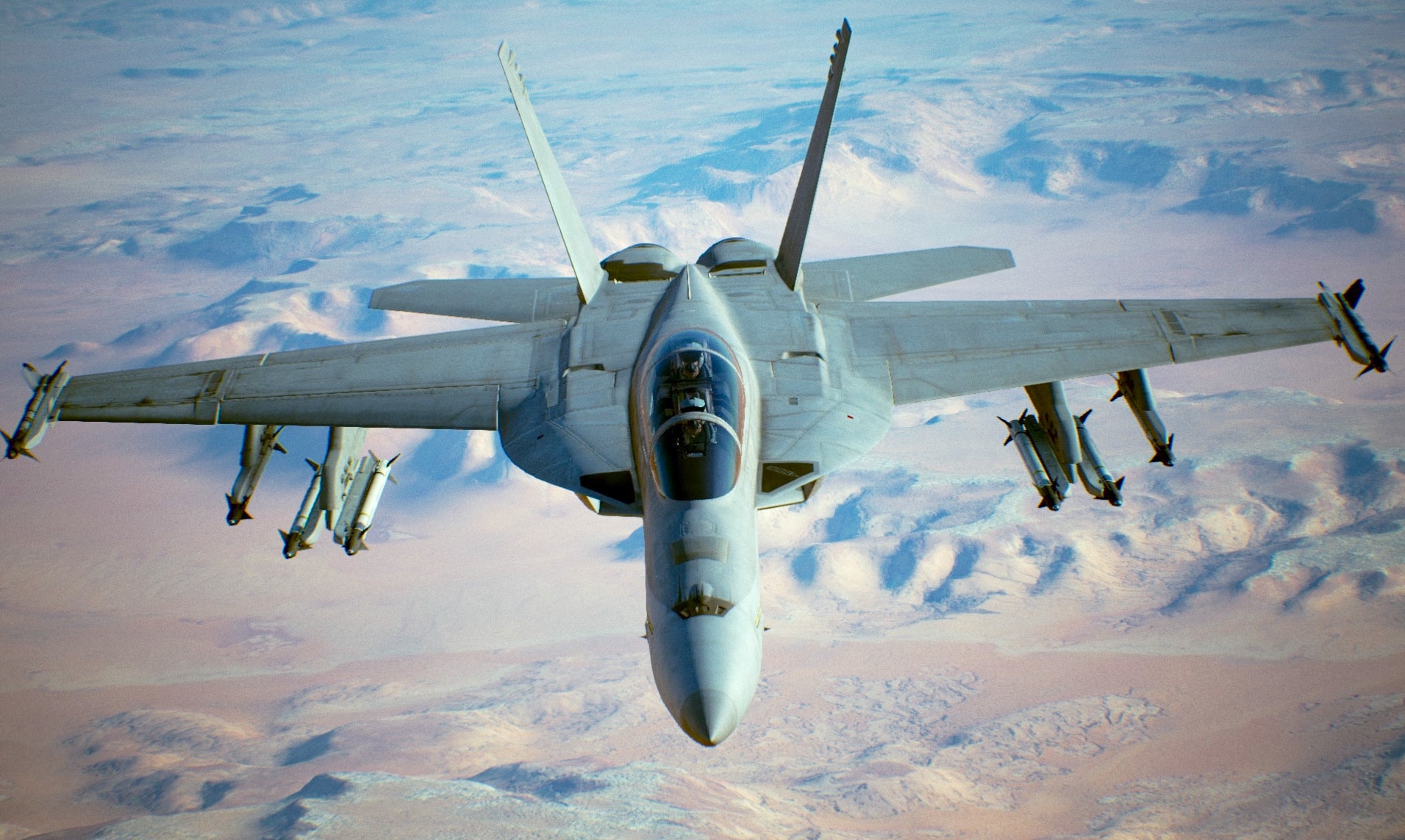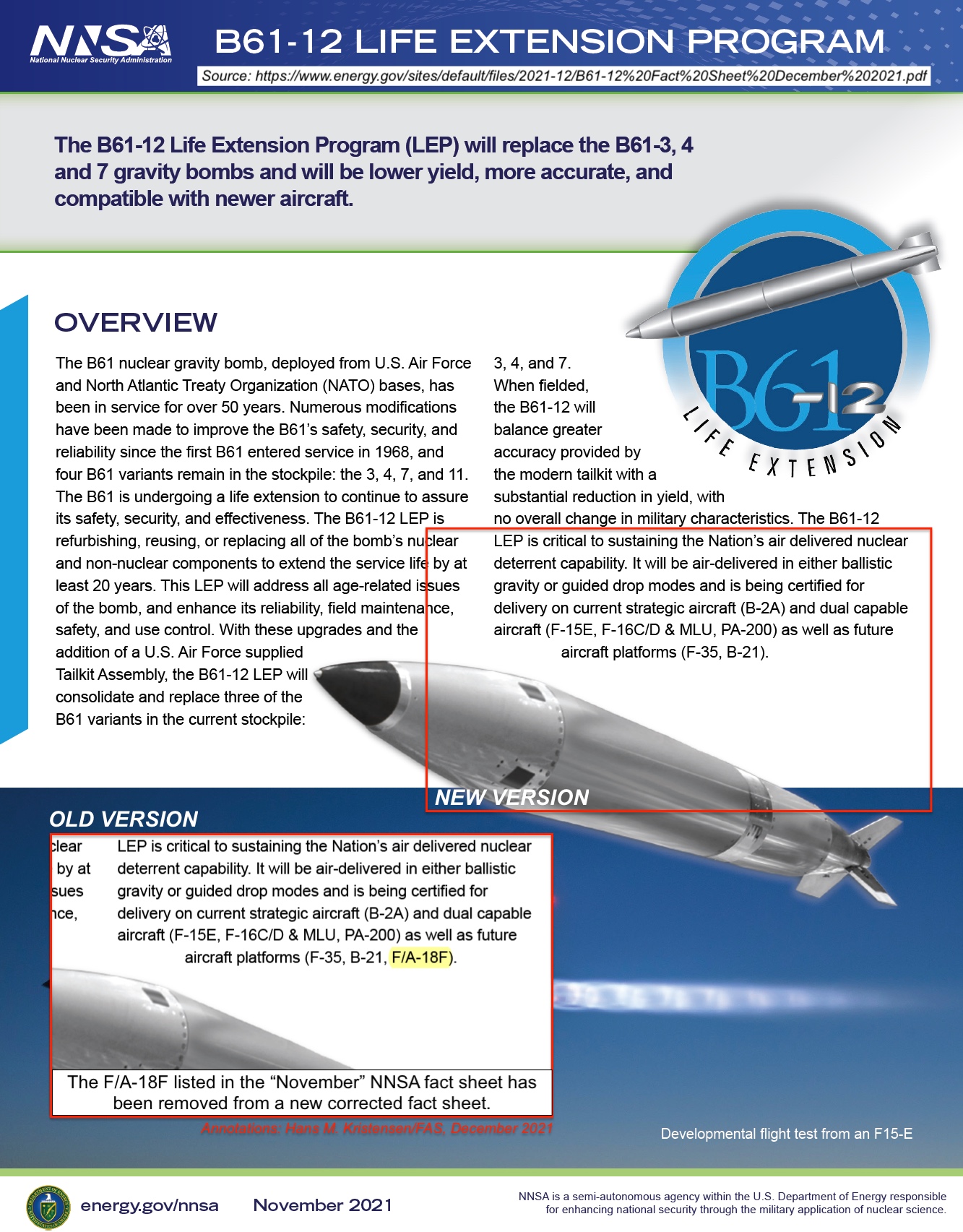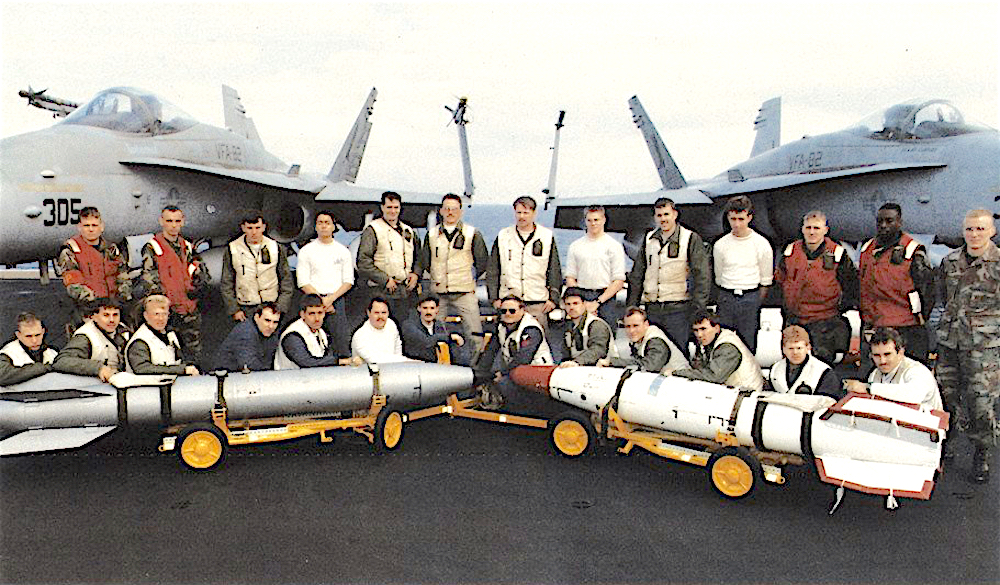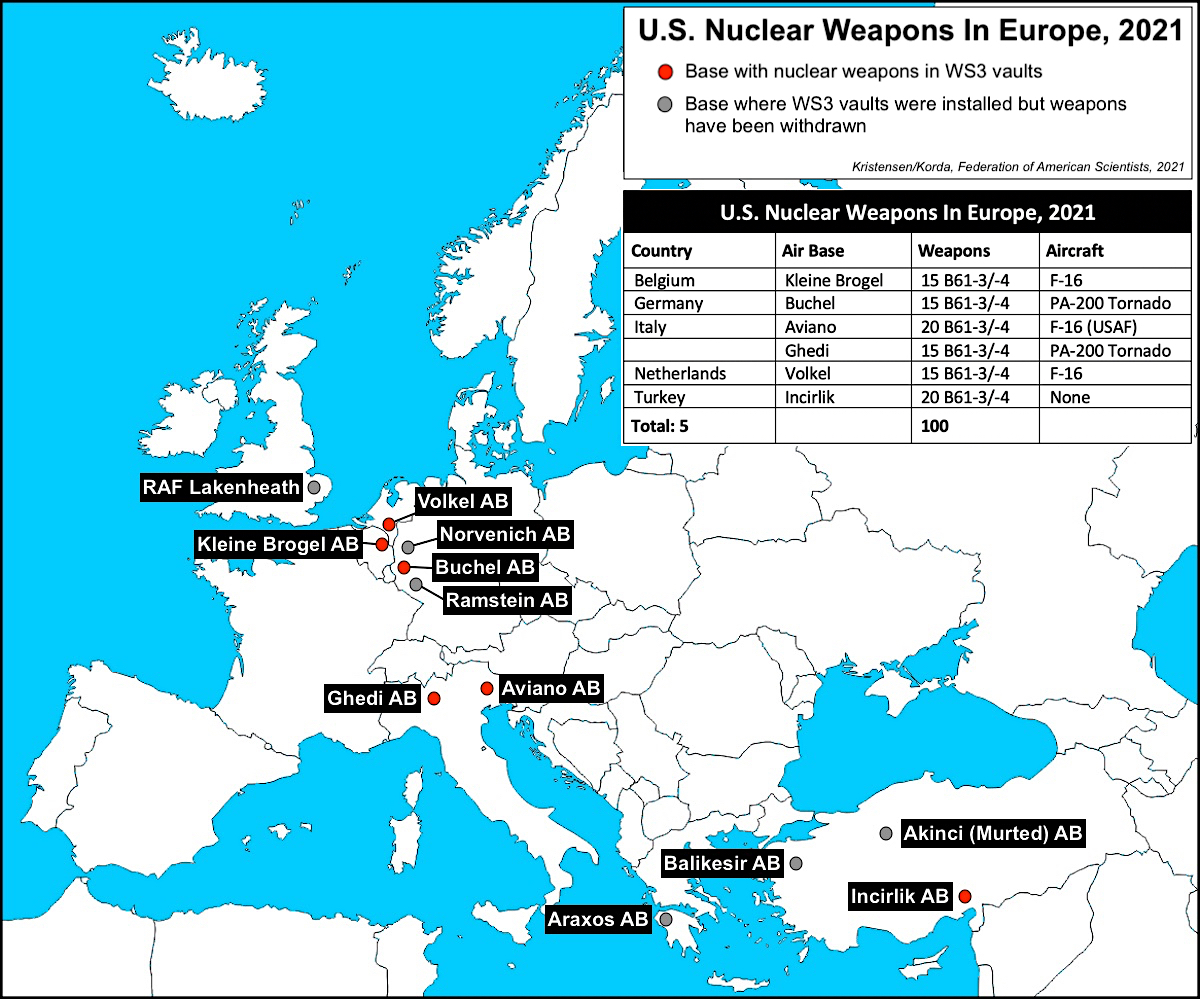NNSA Removes F/A-18F Super Hornet From Nuclear Bomb Fact Sheet

The F/A-18F is a two-seat version of the F/A-18E. Image: US Department of Defense
The National Nuclear Security Administration (NNSA) has quietly removed the F/A-18F Super Hornet from its B61-12 nuclear bomb fact sheet.
No public explanation has been offered for why the aircraft was removed or added in the first place.
The F/A-18F was added to a “November 2021” fact sheet published in early December, which listed the aircraft as one of three future aircraft platforms for the new B61-12 guided nuclear bomb (see image below). An earlier version from 2018 did not mention the F/A-18F.

NNSA in 2021 added, and then deleted, the F/A-18F Super Hornet from its B61-12 nuclear bomb fact sheet.
The reason for including the F/A-18F was not stated. It could potentially indicate anticipated sale to Germany to replace its aging Tornado aircraft in the “nuclear sharing” strike mission, or that the U.S. Navy was planning to reintroduce nuclear capability on aircraft carriers (unlikely).
In response to questions from me, NNSA initially said neither of those were the reason for including the F/A-18F in the fact sheet. But after coordinating with the Defense Department, NNSA asked me to ignore that explanation saying the listing of the F/A-18 in the fact sheet was a mistake.
I have also asked the Defense Department, but it has not responded yet. Update: DOD said “there is not a requirement for the F/A-18F to be certified to carry the B61-12.”
What’s Going On?
The 2018 Nuclear Posture Review (NPR) considered many new nuclear weapons, but only two made it into the public version of the document as “nuclear supplements”: the low-yield W76-2 Trident warhead and the nuclear sea-launched cruise missile (SLCM-N). The W76-2 is already deployed, and the Biden administration’s NPR is currently considering whether to continue the SLCM-N. Doing so would violate the 1992 Presidential Nuclear Initiative.
One of the ideas proposed was reintroducing nuclear weapons on the aircraft carriers, an idea pushed by some former officials. The military rejected the idea. The carriers were denuclearized by the 1994 Nuclear Posture Review, the Navy does not want nukes back on them, but it would in any case probably have been the F-35C – not the F/A-18F.

F/A-18 aircraft (background) used to be tasked with delivering nuclear bombs from aircraft carriers. The image shows B61 (left) and B43 nuclear bomb trainers on the deck of USS America (CV-66) during the 1991 Gulf War. Image: US Navy.
Instead, the appearance of the F/A-18F in the NNSA fact sheet probably reflected preparations to support Germany’s anticipated purchase the aircraft for its nuclear mission, and that the fact sheet was likely corrected because the German government has not publicly announced its selection of the F/A-18 (and the Parliament has not yet agreed to pay for it).
There is a lot of opposition in Germany to nuclear weapons and the question of whether to continue participation in the nuclear-sharing mission is politically sensitive. In 2020, Der Spiegel reported that the German defense minister had informed the Pentagon that Germany intended to buy the F/A-18 to replace the current Tornados (PA-200) in the “nuclear-sharing” strike mission. The report caused an uproar because the Parliament had not been informed or agreed. The minister later denied that a decision had been made, at least officially.
Pressure has been building on Germany to continue the nuclear-sharing mission. During the negotiations of the new coalition government, NATO secretary general Johan Stoltenberg issued what appeared to be an empty threat that “the alternative is that we easily end up with nuclear weapons in other countries in Europe, also to the east of Germany.”
The threat appeared empty because NATO had just endorsed a new defense plan to protect against “the growing threat from Russia’s missile systems” that included “improving the readiness” of NATO nuclear forces. Why NATO would choose to deploy its nuclear forces further east closer to those missiles is unclear. Moreover, deployment of nuclear weapons further east would require NATO consensus, which seems unlikely. But the threat was heard in Moscow and Stoltenberg later had to walk back his threat by reassuring that “We have no plans of stationing any nuclear weapons in other countries than [those that] already have these nuclear weapons….”
The tactical nuclear weapons mission in Europe was recently exercised in the Steadfast Noon exercise held in northern Italy in October. The exercise included German Tornado fighter-bombers. There are an estimated 100 US non-strategic B61 nuclear bombs deployed in Europe, including about 15 at Buchel Air Base in Germany (see map below).

The US Air Force deploys an estimated 100 B61 nuclear bombs at five bases in six European NATO countries. There are no nuclear weapon storage facilities in the new Eastern European NATO countries.
The pressure apparently worked: The new German coalition government took office with a program that agreed to continue Germany’s participation in the nuclear-sharing mission. Although the US Navy has decided to end production of the F/A-18E/F after this year to focus resources on the F-35C, Boeing could continue production for foreign customers, including Germany. And Boeing officials reportedly expect Germany to issue a letter of request for the F/A-18F Super Hornet and EA-18G Growler in early 2022.
The F/A-18F has been removed from the fact sheet for now, but if Germany submits a formal request to buy the aircraft, NNSA will have to update the fact sheet once again.
Additional information:
- NNSA B61-12 Fact Sheet
- Video Shows Earth-Penetrating Capability of B61-12 Nuclear Bomb
- FAS Nuclear Notebook: United States nuclear weapons, 2021
- FAS overview: Status of World Nuclear Forces
This publication was made possible by generous support from the John D. and Catherine T. MacArthur Foundation, the New Land Foundation, the Ploughshares Fund, and the Prospect Hill Foundation. The statements made and views expressed are solely the responsibility of the author.
The FY2026 National Defense Authorization Act (NDAA) paints a picture of a Congress that is working to both protect and accelerate nuclear modernization programs while simultaneously lacking trust in the Pentagon and the Department of Energy to execute them.
While advanced Chinese language proficiency and cultural familiarity remain irreplaceable skills, they are neither necessary nor sufficient for successful open-source analysis on China’s nuclear forces.
Satellite imagery has long served as a tool for observing on-the-ground activity worldwide, and offers especially valuable insights into the operation, development, and physical features related to nuclear technology.
This report outlines a framework relying on “Cooperative Technical Means” for effective arms control verification based on remote sensing, avoiding on-site inspections but maintaining a level of transparency that allows for immediate detection of changes in nuclear posture or a significant build-up above agreed limits.